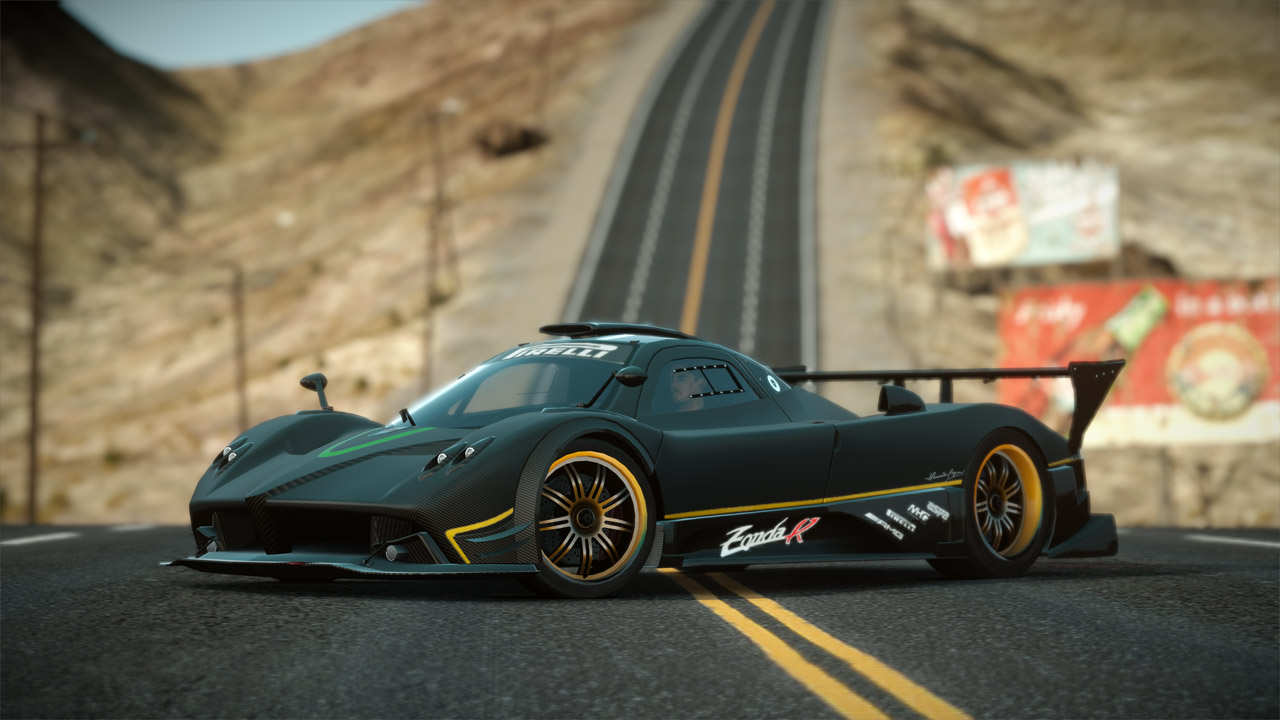12DOVE Verdict
Pros
- +
Exciting setpieces
- +
Satisfying driving model
- +
Balanced and well-paced events
Cons
- -
Short if you don't replay it
- -
Unforgiving event structure
- -
Multiplayer should have had cops and mob chases
Why you can trust 12DOVE
Instead of ushering itself in with a sprint, Need for Speed The Run began with a stumble when the first portion anyone saw when the game was revealed at E3 was an on-foot quick-time event. Later we were assured that these QTE moments were only 5% of the game. In fact, the QTEs make up much less than that – this is absolutely a racing game through and through. The Run simply adds some Hollywood crime-movie flair to raise the stakes, and it works.
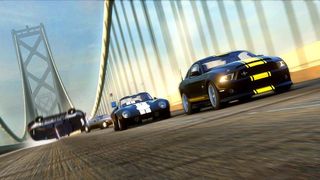
We’re not saying the story is amazing – the main character is kind of a smug douche, his partner in crime (played by Christina Hendricks) doesn’t add much personality-wise, and the bad guys are barely present enough for you to care what happens to them. This is a racing game, though, so we don’t need an amazing story; in fact we want any story to get out of the way quickly so we can go back to driving, and the devs understand this, providing brief setup scenes to tie the driving sections together. The Run’s single-player main mode is one monster race across the US, starting in San Francisco and ending in New York. Of course, doing this all at once would be ridiculous from a gameplay standpoint, so the race is broken into pieces, essentially forming a series of events. Everything fits together nicely, though, and it continues to feel like one big race.
At first we were thrown by The Run’s physics and controls. We were expecting a pure arcade racer, but what we got is something of a hybrid between sim and arcade. We wanted to make sure we weren’t crazy so we went back and played NFS: Hot Pursuit, and it confirmed our assessments – Hot Pursuit is much more forgiving in how you can approach turns. In Hot Pursuit you slide around like your tires are slathered in butter and you can fling your car full-speed into a turn and just slam the brakes to induce an easy drift. In The Run, cars have considerably more weight and have a greater tendency to understeer. When we first started The Run, we were frequently underestimating how much we had to slow down and brake before reaching a turn – much more sim-like, which is not what you’d expect from a game with such arcade overtones.
While we can’t say that The Run is overall a better game than Hot Pursuit, we do like the driving model more because it straddles a nice balance between realism and fun. It’s more difficult to master and therefore more satisfying when you get into the groove of it. It also means that the big setpieces of The Run are extra rewarding since you don’t have tons of wiggle room to just drift your ass around the various explosions and collapsing structures. It could result in frustration for more casual racing fans, but then there’s always Easy mode, right?
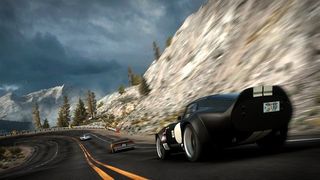
Despite a generous rewind system that allows you to retry failed sections of races, The Run still has some difficulty spikes in Normal mode, and strangely early on in the game. Unlike with Hot Pursuit where you have medals for finishing in different places and times, The Run demands nothing less than total victory. At no point can you pass a section of the race if you don’t get “first” place. See, the game starts you in 250th place and you have to reach 1st place before New York. This means that in any given section of the race, you must pass X number of competitors. If the game didn’t ensure you were on pace to win the race by the end, you could get far into the campaign and be screwed, so it’s a bit of a compromise.
The advantage of this structure is that events can get incredibly tense as you round the last corner, see the “finish line” for that leg of the journey, and the guy you must beat is just ahead of you. It will lead to you yelling “Noooooo!” a few times, but the victories are that much sweeter. This doesn’t mean The Run is just one long “beat X guys in this section” string, though. Things are mixed up nicely. Sometimes you’ll have a rival race where you have to just one “boss” car. Sometimes you’ll have to eliminate a few racers by catching them and then holding the lead for a set time. Sometimes you’ll be between clusters of cars, racing to catch up – essentially a time trial mode. Finally, there are the cops and the mob to worry about, and these setpieces make up the best parts of The Run.
Sure, the movie-like moments are totally contrived, but can you really complain when you’re up against a single rival boss car and you’re both racing through a demolitions-induced avalanche? Or how about swerving to avoid gunfire from a mob helicopter while train cars explode everywhere? We imagine that for some players these sections could possibly get tedious if failed repeatedly, but on Normal mode we never got to that point, and even though we had to replay the final sequence a few times, it was one of the most intense and exciting sections we’ve ever played in a driving game. We won’t give away the final race because it holds some awesome surprises.
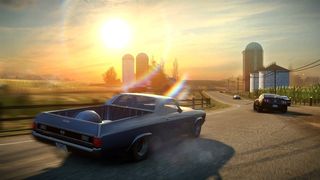
The main campaign of The Run will take a few hours or more, depending on how good you are, but it’s absolutely replayable. Once you complete a section you can go back and cherry pick any part you want to replay. We have to say that it’s refreshing to see the sprawling land of the States represented so realistically – the opening sections re-create San Francisco’s Embarcadero and Bay Bridge almost perfectly, and racing over the Altamont Pass on 580, through Yosemite, and along Death Valley all feel like the real places. There’s also the Challenge mode, were you go for medals in different sections and compare them to your friends’ times in the now standard Autolog system.
The Run’s multiplayer is fairly no-frills, with racers competing across sections seen in the main campaign. You don’t get some of the cool modes where some players get to be cops as in Hot Pursuit (and it’s a bit of a missed opportunity considering there could have been cops vs racers and even mob vs racers). There are tons of challenges to chase even if you’re not winning a race, giving every player something to strive for, and there’s a bonus wheel that randomly selects rewards for races, so even if the racing itself is straightforward, the metagame offers some interesting additional play value. We did notice some lag issues while playing on 360, with cars occasionally warping around, but didn’t see this on PS3. However, this was on debug machines and only over a few hours of play, so it’s hard to say how well the retail multiplayer will perform.
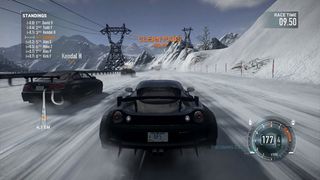
It’s possible Need for Speed The Run won’t provide as many hours of entertainment as previous NFS games, but then it packs in unique events and some incredibly exciting chase sequences, meaning it packs a lot of entertainment-per-hour. It’s not very forgiving of mistakes, but then it provides greater rewards as a result. Whereas MotorStorm: Apocalypse might have overdone it with the setpieces, The Run balances blockbuster style with meat-and-potatoes racing for a well-rounded mix.
More info
| Genre | Racing |
| UK censor rating | "","","","","" |
| Franchise name | Need for Speed |
| US censor rating | "Teen","Teen","","","" |
| Platform | "PS3","Xbox 360","PC","Wii","3DS" |
| UK franchise name | Need for Speed |
| Description | Its possible Need for Speed The Run wont provide as many hours of entertainment as previous NFS games, but then it packs in unique events and some incredibly exciting chase sequences, meaning it packs a lot of entertainment-per-hour. Its not very forgiving of mistakes, but then it provides greater rewards as a result. Whereas MotorStorm: Apocalypse might have overdone it with the setpieces, The Run balances blockbuster style with meat-and-potatoes racing for a well-rounded mix. |
| Release date | 1 January 1970 (US), 1 January 1970 (UK) |
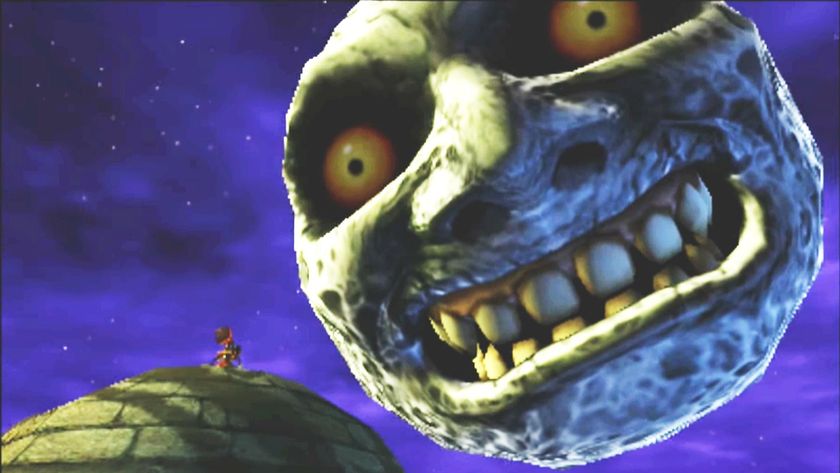
Despite Zelda: Majora's Mask basically being a horror game, one of its key devs didn't think its creepiest features were scary at all: "People on the team were like 'whoa!'"
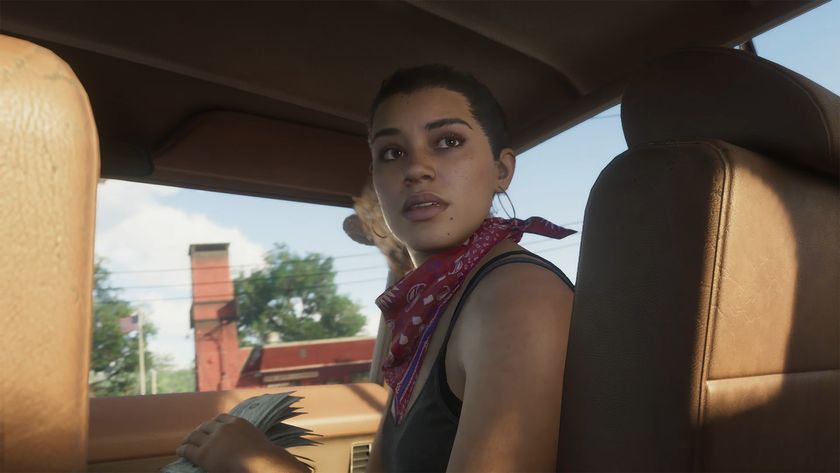
Corsair exec says GTA 6 is coming to PC in early 2026 and then quickly un-says that
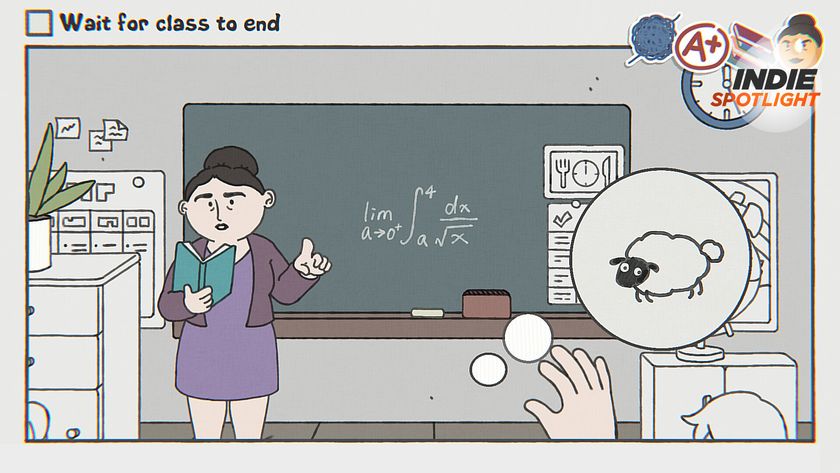
This puzzle game has done the impossible: waiting around for something to happen has never, ever been this fun
Most Popular





